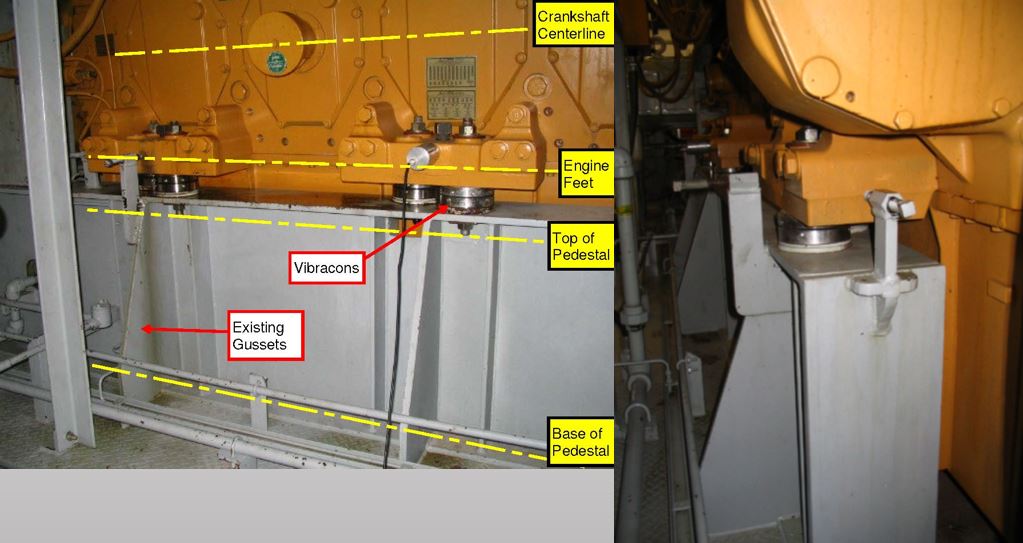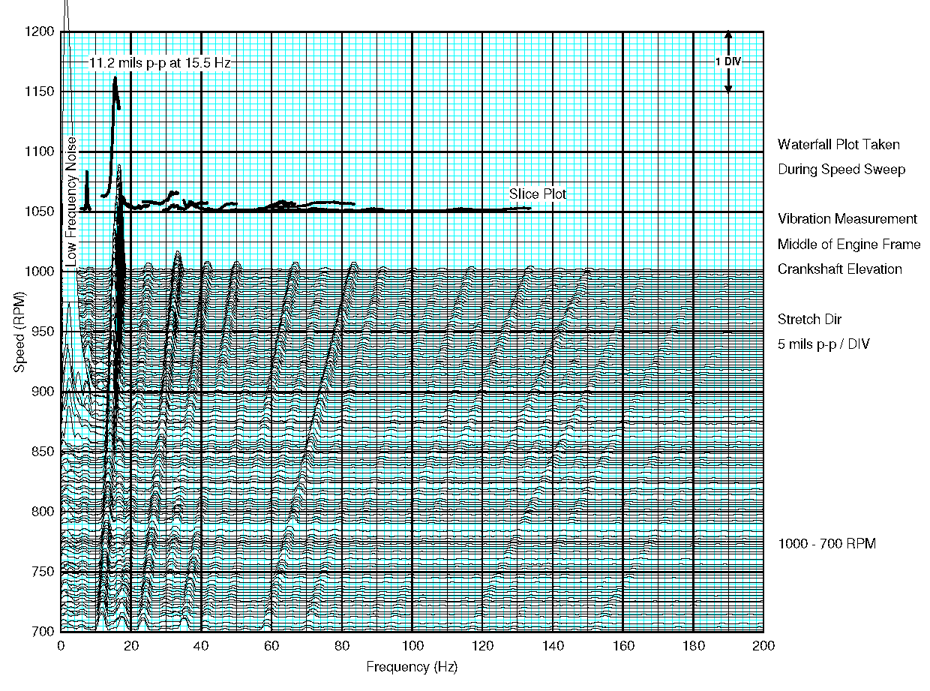Case Studies
Correcting Engine Skid Vibration
Background
Compression of natural gas at gathering and transmission stations is commonly performed by engine driven reciprocating compressor systems. In the design stage, API 618 Design Approach 3 acoustical and mechanical study will typically be performed. However, packagers may overlook the engine skid mounting. When this equipment is skid-mounted, high frame vibration can occur if there is a mechanical natural frequency near the operating speed range.
An example of 12-cylinder natural gas engine mounted on a skid. The engine is rated for 3,550 HP and operates from 700 – 1000 RPM. The engine drives a 4-throw reciprocating compressor.

Figure 1. Original Installation
Testing
During testing vibration levels up to 11 mils p-p were found on the damper end and at the center of the engine frame. A natural frequency was measured at 15.0 – 15.5 Hz.

Figure 2. Waterfall Plot
At operating speeds of 900 – 930 RPM, the engine vibration levels exceeded manufacturer’s allowable of 5 mils p-p. High vibration may have contributed to the rear main bearing failure. Structural natural frequency found involving engine mounted on skid.
An operating deflection shape (ODS) was performed on the engine, compressor and piping. The end view showed side-to-side motion of the engine frame. The majority of the flexibility was found at the mounting feet and in the rails.

Figure 3. Operating Deflection Shape
Recommendations
Recommends included increasing the natural frequency of engine / pedestal above 1× running speed while still maintaining a separation margin from 2× running speed. This requires stiffening the pedestal with additional gussets or re-design of the entire skid. To ensure engine is securely mounted on Vibracons, anchor bolt tension should be checked. Avoid using additional washers with Vibracons.
A finite element analysis (FEA) was performed. The computer model was normalized to match the field measurements. Various modifications were analyzed. The proposed modifications were to add significant size gussets to the skid rails under the engine.

Figure 4. Finite Element Model
After the modifications were installed, engine vibration meets specifications. There have been no more bearing failures. Continue to perform routine vibration checks with compressor performance. When designing system, analyze skid. Adding large gussets after installation of the unit was difficult due to interference from piping, etc.

Figure 5. Final Modifications to Engine Skid